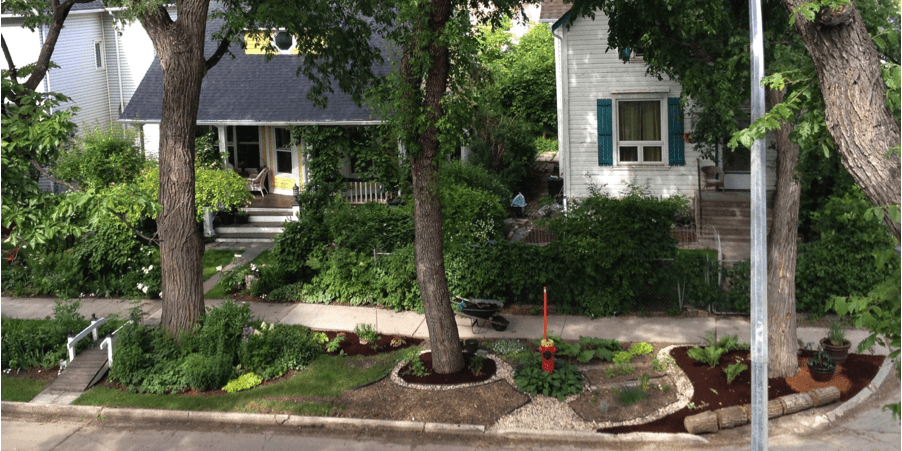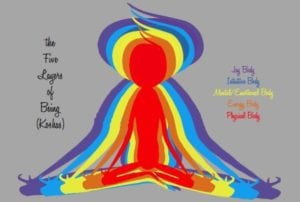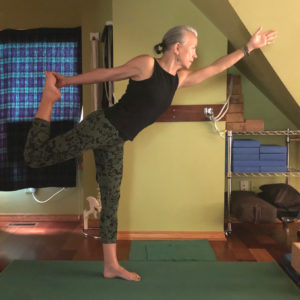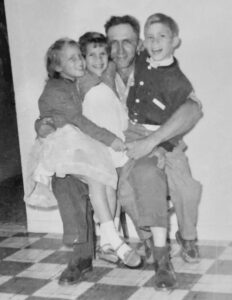Like most of you, I have a list of summertime DIY projects waiting for my attention. As I conduct my research on each one of them, I either decide to proceed or to hire a professional. My decision to DIY is governed by three considerations. Do I have the knowledge, skills and capacity to do the work effectively? The answer to this question determines my ability to execute high-performance work and outcomes that can sustain themselves over their usable lifetime. Isn’t that what we all want regardless of what is on the “To Do” list?
Interestingly, whether we are considering a home improvement or business reorganization, the minimal specifications remain the same — understand what is required with the least energy and expense, and do the job well so it may outlive its usefulness. These specifications involve many aspects of design. For instance, in designing an urban boulevard garden, one must incorporate already existing structures and requirements such as a street sign, large trees, a fire hydrant and street access to the sidewalk. In fact, the more these “givens” are integrated into the final design, the more beautiful and practical the final result. The same is true when designing for organizational change. Having a full view or understanding of the whole enterprise allows a design that incorporates what cannot change with what needs to change.
Due to the interactive complexity in contemporary technological and human systems, most large corporations recognize and recruit for design knowledge and skills. These organization leaders hire change developers and designers to ensure effectiveness is designed into their change processes. Large-scale complex enterprises view design as part-and-parcel of their ever-changing workflow system knowing that change in any system impacts all other systems. Experience has taught them that restructuring their organization chart is not organization design. It is merely the beginning of a change where multiple stakeholders and divergent goals can lead in as many directions as there are boxes on the chart.
Scratching beyond the surface of an organization chart entails assessing the interdependencies within an enterprise’s strategy, structure, processes, rewards and people. Thinking about the enterprise as its own ecosystem helps to understand these relationships and their interactions. If there is a drought in one function or area of the ecosystem, its impact is surely being felt elsewhere.
Performance improvement is driven by an explicit effort to view and adjust the entire ecosystem within the firm. Dale Albrecht
Unfortunately, small and medium-sized enterprises tend to opt for DIY organization redesign and development. What they fail to realize is sustainable performance improvement and enterprise effectiveness is correlated with the availability and depth of design and development knowledge, skills and capacity. Often smaller firms underestimate their internal complexity and thus their need for these skills. However, with the considerable influence of ICT (information and communication technology) in every workplace, the size of a business enterprise no longer determines its system complexity. Without organization design knowledge and skills as part of the change process, three common mistakes prevail:
- A whole system perspective is not considered. A piecemeal approach of changing only one function results in changes not being communicated to other areas, which then ignore what has changed until they are negatively impacted by it. In order to bring about the positive outcomes you desire, how will you include all voices in the change effort, in particular, those who are most affected by the change?
- People will serve their own best interests. Many change initiatives fail to achieve their desired objectives even if the change is widely viewed as necessary. If your organization has 10 employees, then you have 10 different perspectives of what works and what doesn’t. How will you bring these disparate views into a unified vision and design of how work will flow from here on?
- Previous failed attempts at change weaken an organization. Not only has peoples’ confidence been eroded and disbelief in change heightened, but very likely productivity has also declined. What steps will you take to shift from this negative thinking and outcome into the willingness and optimism necessary to drive effective change forward?
Most importantly, how and where will you inject, that is, design joy into the experience of creating change? Joy is a significant motivator and is achieved when we find our talents being used to create something meaningful. What steps will you take to engage your entire organization in expressing its individual and collective creativity and joy?
Building and sustaining momentum for change requires large amounts of positive affect and social bonding — things like hope, excitement, inspiration, caring, camaraderie, sense of urgent purpose, and sheer joy in creating something meaningful together. Cooperrider & Whitney, Appreciative Inquiry: A Positive Revolution in Change
For more on journeying into the joy of organization design and effectiveness, click here.





